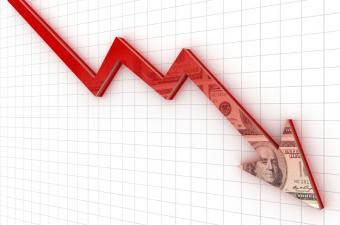The high frequency of catastrophe events experienced in the U.S. through the third-quarter of 2020, coupled with a substantial level of additional losses related to the ongoing COVID-19 pandemic, hindered the performance of North American (NA) property/casualty (P/C) re/insurers in 9M 2020, reports Fitch Ratings.
 Fitch’s analysis looks at the 9M 2020 GAAP results of 50 NA insurers and reinsurers, revealing that operating performance for the group declined, year-on-year.
Fitch’s analysis looks at the 9M 2020 GAAP results of 50 NA insurers and reinsurers, revealing that operating performance for the group declined, year-on-year.
Overall, the group’s GAAP operating annualised return on average equity (ROAE) fell to 5.5% at 9M 2020 from 8.2% a year earlier, driven by a deterioration in the underwriting performance and lower investment earnings.
According to Fitch, 13 of the 50 re/insurers examined reported a double-digit operating ROAE in the period, which represents a decline from 20 in the prior year.
During the third-quarter of 2020, the U.S. experienced a number of landfalling hurricanes, a Midwest derecho event, an intense period of hail and thunderstorms, and additional wildfire activity. Fitch notes that a number of these events are projected to drive an industry-wide loss of $1 billion or greater, resulting in an aggregation of claims that ultimately lowered earnings.
At the same time, the coronavirus pandemic continues to hinder the performance of P/C insurers in the region, although as noted by the ratings agency, the pace of additional reported COVID losses did slow in Q3.
According to Fitch, re/insurers in this cohort added almost $1 billion of new losses from the pandemic in the third-quarter, taking the total for 9M 2020 to $7.7 billion.
Fitch’s data shows that for its cohort of 50 re/insurers, around $1.72 billion of COVID-19 related losses were booked in Q1, combined with a huge $5 billion in Q2 and some $991 million in Q3 2020.
“The additional reserves reported by select insurers reflects the different reserving approaches, with some companies reserving as they go and others booking ultimate expected losses upfront,” says Fitch.
Adding: “A large portion of 3Q20 incurred pandemic losses were attributable to liability coverages, such as workers’ compensation and financial lines, including directors and officers and errors and omissions.”
Overall, the group’s loss ratio rose from 67.9% at 9M 2019 to 69.2% at 9M 2020, while the expense ratio also increased slightly to 27.7%.
As a result of the elevated level of losses from cats and the pandemic so far in 2020, Fitch has reported that the group’s combined ratio has deteriorated to 96.9% for 9M 2020, against 95.2% for the same period in 2019.
The accident year combined ratio has also deteriorated year-on-year, reaching 97.6% in 9M 2020 compared with 95.8% in 9M 2019. However, excluding catastrophe events and the pandemic, the accident year combined ratio actually strengthened in 9M 2020 to 89.4% from the 92.5% posted in 9M 2019.
While profitability declined in the period, the cohort did record net earned premium growth of 3.3% in 9M 2020 on the back of a hardening rate environment across the majority of commercial re/insurance lines of business.
“Sharp commercial lines rate increases point to better underwriting performance in 2021,” said Christopher Grimes, Director at Fitch.
After a prolonged soft market state, insurance and reinsurance markets are hardening for the first time in years ahead of the key, January 1st, 2021 reinsurance renewals. With price rises expected to be persist at 1/1 and beyond, potentially into 2022, it’s expected that the underwriting performance will improve as firms target profitable growth in more favourable operating conditions.


